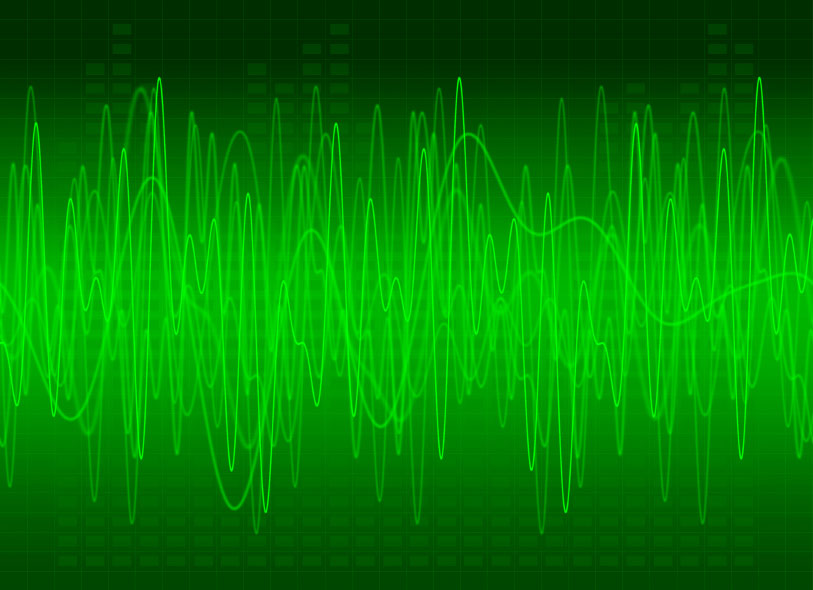- Our Story
- Publications & Resources
- Publications & Resources
- Publications
- IEEE Signal Processing Magazine
- IEEE Journal of Selected Topics in Signal Processing
- IEEE Signal Processing Letters
- IEEE Transactions on Computational Imaging
- IEEE Transactions on Image Processing
- IEEE Transactions on Information Forensics and Security
- IEEE Transactions on Multimedia
- IEEE Transactions on Signal and Information Processing over Networks
- IEEE Transactions on Signal Processing
- IEEE TCI
- IEEE TSIPN
- Data & Challenges
- Submit Manuscript
- Guidelines
- Information for Authors
- Special Issue Deadlines
- Overview Articles
- Top Accessed Articles
- SPS Newsletter
- SigPort
- SPS Resource Center
- Publications FAQ
- Blog
- News
- Dataset Papers
- Conferences & Events
- Community & Involvement
- Professional Development
- For Volunteers
- Information for Authors-OJSP
-
Home
Conferences Events IEEE Signal Processing Magazine IEEE SPL Article IEEE TIFS Article IEEE TMM Article IEEE TSP Article Jobs in Signal Processing Lectures Machine Learning Seasonal Schools Signal Processing News SPM Article SPS Distinguished Lectures SPS Newsletter Article SPS Webinar SPS Webinars SPS Webinar Series Webinar webinars
-
Our Story
What is Signal Processing?

The technology we use, and even rely on, in our everyday lives –computers, radios, video, cell phones – is enabled by signal processing. Learn More » -
Publications & Resources
-
SPS Resources
- Signal Processing Magazine The premier publication of the society.
- SPS Newsletter Monthly updates in Signal Processing
- SPS Resource Center Online library of tutorials, lectures, and presentations.
- SigPort Online repository for reports, papers, and more.
- SPS Feed The latest news, events, and more from the world of Signal Processing.
-
SPS Resources
-
Conferences & Events
-
Community & Involvement
-
Membership
- Join SPS The IEEE Signal Processing Magazine, Conference, Discounts, Awards, Collaborations, and more!
- Chapter Locator Find your local chapter and connect with fellow industry professionals, academics and students
- Women in Signal Processing Networking and engagement opportunities for women across signal processing disciplines
- Students Scholarships, conference discounts, travel grants, SP Cup, VIP Cup, 5-MICC
- Young Professionals Career development opportunities, networking
- Get Involved
-
Technical Committees
- Applied Signal Processing Systems
- Audio and Acoustic Signal Processing
- Bio Imaging and Signal Processing
- Computational Imaging
- Image Video and Multidimensional Signal Processing
- Information Forensics and Security
- Machine Learning for Signal Processing
- Multimedia Signal Processing
- Sensor Array and Multichannel
- Signal Processing for Communication and Networking
- Signal Processing Theory and Methods
- Speech and Language Processing
- Technical Working Groups
- More TC Resources
-
Membership
-
Professional Development
-
Professional Development
- Signal Processing Mentorship Academy (SigMA) Program
- Micro Mentoring Experience Program (MiME)
- Distinguished Lecturer Program
- Distinguished Lecturers
- Distinguished Lecturer Nominations
- Past Lecturers
- Distinguished Industry Speaker Program
- Distinguished Industry Speakers
- Distinguished Industry Speaker Nominations
- Industry Resources
- IEEE Training Materials
- Jobs in Signal Processing: IEEE Job Site
-
Career Resources
- SPS Education Program Educational content in signal processing and related fields.
- Distinguished Lecturer Program Chapters have access to educators and authors in the fields of Signal Processing
- Job Opportunities Signal Processing and Technical Committee specific job opportunities
- Job Submission Form Employers may submit opportunities in the area of Signal Processing.
-
Professional Development
-
For Volunteers
-
For Board & Committee Members
- Board Agenda/Minutes* Agendas, minutes and supporting documentation for Board and Committee Members
- SPS Directory* Directory of volunteers, society and division directory for Board and Committee Members.
- Membership Development Reports* Insight into the Society’s month-over-month and year-over-year growths and declines for Board and Committee Members
-
For Board & Committee Members
Popular Pages
Today's:
- Information for Authors
- IEEE Transactions on Information Forensics and Security
- Awards & Submit Award Nomination
- SPS Scholarship Program
- IEEE Transactions on Signal Processing
- (ASRU 2025) 2025 IEEE Automatic Speech Recognition and Understanding Workshop
- Submit a Manuscript
- SPS ISAC-TWG Webinar: Sensing with Random Communication Signals
- Publications & Resources
- IEEE Transactions on Image Processing
- Governance Documents
- IEEE Transactions on Multimedia
- Unified EDICS
- IEEE Journal of Selected Topics in Signal Processing
- SPS Webinar: Temporal Context Mining for Learned Video Compression
All time:
- Information for Authors
- Submit a Manuscript
- IEEE Transactions on Image Processing
- IEEE Transactions on Information Forensics and Security
- IEEE Transactions on Multimedia
- IEEE Transactions on Audio, Speech and Language Processing
- IEEE Signal Processing Letters
- IEEE Transactions on Signal Processing
- Conferences & Events
- IEEE Journal of Selected Topics in Signal Processing
- Information for Authors-SPL
- Conference Call for Papers
- Signal Processing 101
- IEEE Signal Processing Magazine
- Guidelines
Last viewed:
- Information for Authors
- What Should We Learn from IARPA’s Deep-Learning Challenge Seeks AI to Analyze Satellite Images
- IEEE Transactions on Image Processing
- Learning Graph ARMA Processes From Time-Vertex Spectra
- IEEE Signal Processing Letters
- (AVSS 2025) 2025IEEE International Conference on Advanced Video and Signal-Based Surveillance
- Governance Documents
- IEEE Transactions on Information Forensics and Security
- (ICASSP 2026) 2026 IEEE International Conference on Acoustics, Speech, and Signal Processing
- Call for Proposals: IEEE ICME 2027
- Jobs in Signal Processing
- Guidelines for Reviewers
- (EUSIPCO 2025) 2025 European Signal Processing Conference
- 10 Cool Machine Learning Startups To Watch
- Information for Authors-SPM
Graph Signal Processing: Structure and Scalability to Massive Data Sets
You are here
Newsletter Menu
Newsletter Categories
Top Reasons to Join SPS Today!
1. IEEE Signal Processing Magazine
2. Signal Processing Digital Library*
3. Inside Signal Processing Newsletter
4. SPS Resource Center
5. Career advancement & recognition
6. Discounts on conferences and publications
7. Professional networking
8. Communities for students, young professionals, and women
9. Volunteer opportunities
10. Coming soon! PDH/CEU credits
Click here to learn more.
News and Resources for Members of the IEEE Signal Processing Society
Graph Signal Processing: Structure and Scalability to Massive Data Sets
Abstract
Advisor: José M. F. Moura
Large-scale networks are becoming more prevalent, with applications in healthcare systems, financial networks, social networks, and traffic systems. The detection of normal and abnormal behaviors (signals) in these systems presents a challenging problem. State-of-the-art approaches such as principal component analysis and graph signal processing address this problem using signal projections onto a space determined by an eigendecomposition or singular value decomposition. When a graph is directed, however, applying methods based on the graph Laplacian or singular value decomposition causes information from unidirectional edges to be lost. Here we present a novel formulation and graph signal processing framework that addresses this issue and that is well suited for application to extremely large, directed, sparse networks.
In this thesis, we develop and demonstrate a graph Fourier transform for which the spectral components are the Jordan subspaces of the adjacency matrix. In addition to admitting a generalized Parseval’s identity, this transform yields graph equivalence classes that can simplify the computation of the graph Fourier transform over certain networks. Exploration of these equivalence classes provides the intuition for an inexact graph Fourier transform method that dramatically reduces computation time over real-world networks with nontrivial Jordan subspaces.
We apply our inexact method to four years of New York City taxi trajectories (61 GB after preprocessing) over the NYC road network (6,400 nodes, 14,000 directed edges). We discuss optimization strategies that reduce the computation time of taxi trajectories from raw data by orders of magnitude: from 3,000 days to less than one day. Our method yields a fine-grained analysis that pinpoints the same locations as the original method while reducing computation time and decreasing energy dispersal among spectral components. This capability to rapidly reduce raw traffic data to meaningful features has important ramifications for city planning and emergency vehicle routing.
Open Calls
Conferences & Events
Publications News
- SPS Publications Alert: February 2019 Available Tables of Contents
- What Should We Learn? Special Issue on Robust Subspace Learning and Tracking
- Nominations Open for IEEE Transactions on Multimedia Editor-in-Chief
- IEEE TSIPN Accepted for Indexing by the Clarivate Analytics Web of Science
- Special Issue on Tactile Internet
- What Should We Learn? Introduction to the Special Issue in Memoriam of Lotfi A. Zadeh
Society News
Technical Committee News
SPS Social Media
- IEEE SPS Facebook Page https://www.facebook.com/ieeeSPS
- IEEE SPS X Page https://x.com/IEEEsps
- IEEE SPS Instagram Page https://www.instagram.com/ieeesps/?hl=en
- IEEE SPS LinkedIn Page https://www.linkedin.com/company/ieeesps/
- IEEE SPS YouTube Channel https://www.youtube.com/ieeeSPS
Home | Sitemap | Contact | Accessibility | Nondiscrimination Policy | IEEE Ethics Reporting | IEEE Privacy Policy | Terms | Feedback
© Copyright 2025 IEEE - All rights reserved. Use of this website signifies your agreement to the IEEE Terms and Conditions.
A public charity, IEEE is the world's largest technical professional organization dedicated to advancing technology for the benefit of humanity.









